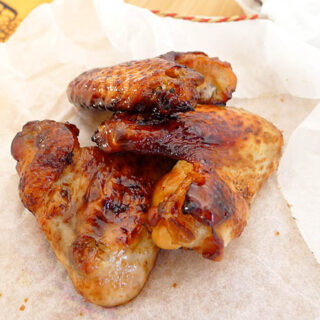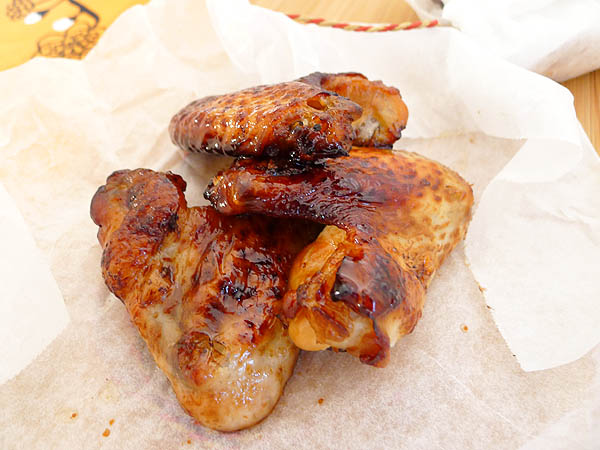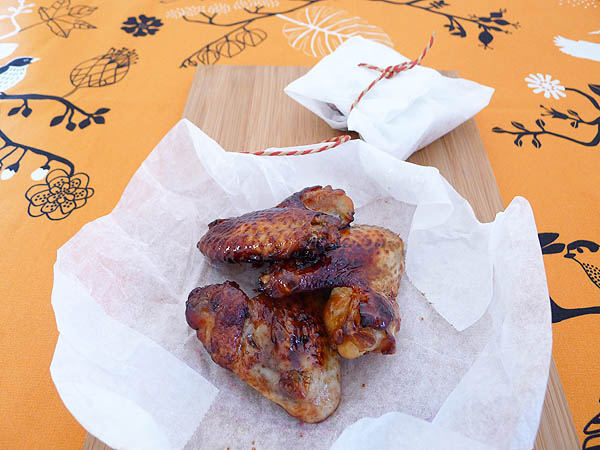I don't think my love for Japan, it's people and especially the food is a secret. Many years ago when I started to pursue my love of Japanese food, by learning how to prepare it for myself at home, it was a struggle to find the appropriate ingredients. Luckily, there are now many Japanese grocery shops around Sydney and many basic staples are available in your local supermarket. How far we have come.
Many years ago when I would originally see the word 'sake' in the ingredient list of recipes, I would run out and try and source a bottle of drinking sake (Nihonshu). Then one day, in my lounge room, Tetsuya Wakuda shared something with me. "This is cooking sake, you don't use the sake you drink when cooking'. Maeve O'Meara then turned to him, nodded her head, and said she didn't realise there was a difference. I do love Food Safari. Like Maeve, I had no idea there was a difference until that moment either.
Ryorishu is the Japanese word for cooking sake and literally means 'cuisine alcohol'. You generally don't drink ryorishu straight, it isn't enjoyable as a drink. It is milled differently to drinking sake, there is a lower milling rate of around 80-90%. Milling removes fats, proteins and amino acids that lead to unwanted flavours and aromas in the brewing process.
A lower milling rate means it isn't as refined in taste as a drinking sake, but the bolder flavour lends itself much better to cooking. It doesn't get lost amongst other ingredients like soy sauce, sugar etc.
Ryorishu does have an alcohol content, the one in my cupboard is rated at 14-15% alcohol. Therefore salt is added to the ryorishu (usually about 2% to render it just undrinkable), which allows supermarkets to sell it.
I think that most people have heard of mirin. I actually always thought that mirin was a sweet cooking sake, but I was wrong. It is technically not sake. I am very thankful to Leigh from Chef's Armoury for educating me in regard to mirin.
Leigh explained 'Like sake, mirin is basically made from rice that has the starches turned into sugars via the action of koji. Where it differs is there is no fermentation. Shochu is added to the mash to extract flavour and it is then pressed after a period of time. Also mirin is made from mochi rice, not sake rice. In Japan sake has a pretty tight legal definition'.
There are three main grades that range in alcohol content. Back in the Edo period mirin was actually drunk as a sweet alcoholic beverage before becoming a popular Japanese cooking ingredient. The Mirin you use to cook with is a lot thicker and sweeter than what was drunk back in the Edo times. Today it is still used as a ceremonial drink at the beginning of the New Year or other ceremonial occasions.
Chef's Armoury has a great range of Japanese cooking products, cookware, tableware, accessories, as well as an amazing range of knives. You can also purchase what you need from Chef's Armoury online and have it delivered, makes life a lot easier if you aren't local. If you are new to Japanese cooking, do call in and pay them a visit as they are incredibly helpful an full of great advice.
Both ryorishu and mirin are used in marinades and sauces. Mirin is also used as a glaze for grilled dishes.
I do use quite a bit of both ryorishu and mirin in my kitchen. So much so that I buy 1L bottles of both. Well actually my mirin comes in a 1.5L bottle. I know that may sound a lot, but it gets used and means less frequent trips across two bridges to Tokyo Mart in Northbridge. I love Tokyo Mart due to its vast range and variety.
When I was coming up for easy lunch ideas I was thinking about how to incorporate a Japanese style dish. Something that would taste just as good cold as it does hot. Something easy to eat by itself or could be accompanied by some rice or salad. And so my Teriyaki Chicken Wings were born. Okay I am sure I am not the only person in the world to have ever cooked these, but I still want to share this super easy recipe with you.
Either eat them while they are still warm from the oven or let them cool down to be taken to work or school for lunch.
These wings really are finger-licking good. Yes, you will be licking your fingers if you are using them to eat with, as they are a little on the sticky side. Cook up a batch, don't be scared to get in and get a little messy, they are well worth it.
Do tell dear Belly Rumbles' reader, is your pantry stocked with Japanese cooking ingredients like me, or do you prefer to enjoy Japanese cuisine at a restaurant?
Sara xxx
Printable Recipe

Teriyaki Chicken Wings
Ingredients
- 120 ml Japanese soy sauce
- 60 ml mirin
- 60 ml sake | cooking sake
- 3 tablespoons caster sugar (superfine sugar)
- 4 teaspoon vegetable oil
- 10 chicken wings wing tips removed
Instructions
- In a large bowl or container, combine soy sauce, mirin, ryorishu, sugar and oil. Add chicken wings and make sure they are coated well with the mixture. Cover with plastic wrap or lid and place in fridge for a couple of hours to marinade. Overnight is preferable, but if you don't have the time at least 2 hours.
- Pre-heat oven at 180 degrees C. Remove your chicken wings from the bowl/container, reserving the marinade and place them on a baking tray which has been lined with baking paper.
- While wings are cooking, brush a couple of times with marinade. I do this when I am turning the wings over to ensure a nice even colouring. Cook chicken wings in oven for approximately 45 minutes until cooked through and are deep golden brown in colour.
Oven Temperatures
All oven temperatures are fan forced.
Measurement Notes
All measurements are Australian metric standard. All measures are level, and cups are lightly packed unless specified. 1 teaspoon = 5ml / 1 tablespoon = 20mls / 1 cup = 250ml /4 teaspoons = 1 tablespoon.
Recipe Notes
NUTRITIONAL INFORMATION
The recipe's nutritional information is an approximation based on an online calculator. It is meant solely for reference purposes. If you're looking for precise details, be sure to double-check with your own research.




Rita (mademoiselle délicieuse)
I'm not good with cooking with alcohol, apart from the odd splash of red in tomato-based pasta sauces or Shaoxing wine in stir-fries! Makes sense that there are separate cooking and drinking sakes as there are with Shaoxing wine as well.
Iron Chef Shellie
Chef's Armoury is a magical place that I must visit more often. So glad they came to Melbourne!
Sara
Was nice to see them expand and move down your way. Is a great place to shop.
milkteaxx
oh i didnt know there was a difference either! thanks! where can i get these different sakes?
Sara
Drinking sake is generally bought through liquor stores, but Tokyo Mart now stocks it as well. Cooking sake can be found a Asian food stores or Japanese specialty food stores.
Gaby
Interesting stuff, thanks for educating us in Japanese cuisine matters! Your recipe sounds delish, I'm sure I'll be licking my fingers when I get a chance to try it. As for Japanese ingredients, I tend to have nori, tamari, katsuobushi, kombu, mirin, and sichimi togarashi always on hand.
Sara
Thanks so much Gaby. Lovely range of ingredients you have on hand.
Peter G | Souvlaki For The Soul
Love the wings Sarah! And thanks for the lesson in sake! I had no idea there were two types!
Sara
Thanks Peter, glad you liked the little sake write up 🙂
Food is our religion
As much as I love the Japanese cuisine, I find I rarely cook it because I dont have more than half of the ingredients. Its only lately that I have begun to stock my pantry with a few of the common japanese ingredients. I'll slowly get there lol
Sara
Sounds like you are definitely getting there with your ingredients. I found I slowly added as I became more familiar with them.
Miss Piggy
These wings look wonderful....and I had no idea there were different types of sake, but I guess it makes sense. I don't have a lot of Japanese ingredients at home as I really don't know what to do with them...
Sara
Thanks so much Mel. For quite a while I was using high grade sake in my dishes, not sure they tasted any better though...
GourmetGetaways
LOL! I have a whole shelf dedicated to Japanese ingredients, I put it up high away from Mr GG because if he spots nori or rice seasoning he eats it on its own... yes that is possible, he sprinkles it on his hand and licks it... maybe I have over shared. Our kitchen always has ryorishu and mirin so I can make this dish immediately.
Thank you so much for sharing... I have also book market the Chef Armoury so that I can pick up some things for photo styling next time I am in Sydney 🙂 Great story 🙂
Sara
LOL, go Mr GG!
john | heneedsfood
I actually had no idea there was a difference between cooking and drinking sake, either. Until now, of course. And I even watched that episode of Food Safari but I guess I wasn't paying attention.
I don't have a great deal of Japanese ingredients in my pantry but I could probably count 5 or 6 items. Including bonito flakes! I think I need to try this easy recipe for chicken wings. Sounds delish!
Sara
5 or 6 items is pretty good John. Love my bonito flakes, the way they dance 🙂
kewpielovesyou
yum! my pantry always has sake, mirin, soy sauce, ponzu. love teriyaki!
Sara
Thanks 🙂 Sounds like a well stocked pantry!
Helen (Grab Your Fork)
Who can resist a sticky soy chicken wing? I usually just make mine with garlic and honey but I might break out the sake and mirin next time! I have no end of Japanese products in my pantry - yuzu dressing is fantastic on salads and I always have a bottle of zaru soba dressing for summer dinners.
Sara
Oh I love my yuzu. I have a range of Japanese dressing for salad, they taste awesome and really make a boring salad just a bit more exciting.
Jacq
I think I'll need to pay a visit to Tokyo Mart for those jumbo bottles of mirin and sake! The chicken wings look great!
Sara
Thanks Jacq!
Christine @ Cooking Crusade
Oh wow. I had no idea there was a difference between cooking sake and regular sake. I absolutely love teriyaki and your recipe looks great! I also stock mirin and sake at home (although the sake is more of a keepsake from a trip to Japan a few years ago). I do tend to buy food when travelling too, as the mirin which I also brought back from Japan. I'm headed back there in four or so weeks so I intend to have a look in the shops and see what interesting things I can find! 🙂
Sara
Enjoy your trip back to Japan. I always do a grocery shop when I am over there, is factored in each time!